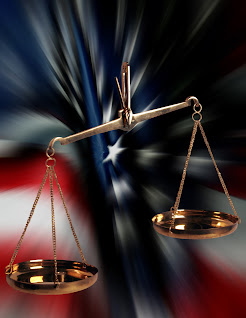Claim Splitting In Washington
What is claim splitting and how is it applied in Washington State? Here’s my point of view (NOTE: please read our DISCLAIMER before proceeding).
RES JUDICATA
The theory of claim splitting is “variously referred to as res judicata or splitting causes of action.” Landry v. Luscher, 95 Wn.App. 779, 783, 976 P.2d 1274 (1999); Sound Build Homes, Inc. v. Windermere Real Estate/ South, Inc., 118 Wn.App. 617, 628, 72 P.3d 788 (Wash.App. Div. 2 2003); Schoeman v. New York Life Ins. Co., 106 Wn.2d 855, 859, 726 P.2d 1 (1986). Res judicata prevents relitigation of claims already decided. Haberman v. Washington Public Power Supply System, 109 Wn.2d 107, 121-22, 744 P.2d 1032 (Wash. 1987) (citing Meder v. CCME Corp.,7 Wash.App. 801, 803, 502 P.2d 1252 (1972)) (emphasis added).
While res judicata bars relitigation of claims necessarily a part of a previous matter in controversy, it poses no bar to claims not in fact adjudicated previously. Id. at 122 (citing Seattle-First Nat’l Bank v. Kawachi, 91 Wash.2d 223, 226, 588 P.2d 725 (1978)) (holding res judicata did not bar plaintiffs’ claims). Thus, “the threshold requirement of res judicata is a final judgment on the merits in the prior suit.” Hisle v. Todd Pacific Shipyards Corp., 151 Wn.2d 853, 865, 93 P.3d 108 (Wash. 2004).
THE GENERAL RULE
The general rule for claim splitting is that “if an action is brought for part of a claim, a judgment obtained in the action precludes the plaintiff from bringing a second action for the residue of the claim.” Landry v. Luscher, 95 Wn.App. 779, 782, 976 P.2d 1274 (1999) (Plaintiffs prohibited from suing for personal injuries after obtaining judgment for property damage arising out of same accident) (emphasis added); see also, Nguyen v. Sacred Heart Medical Center, 97 Wn. App. 728, 987 P.2d 634 (1999) (Plaintiff prohibited from raising a new claim on appeal after summary judgment).
Res judicata will not apply until there has been a final judicial judgment. See, Phillip A. Trautman, Claim and Issue Preclusion in Civil Litigation in Washington, 60 Wash.L.Rev. 805, 807 (1985) (emphasis added).
TWO EXAMPLES
Here are two examples: First, in Landry v. Luscher, 95 Wn.App. 779, 976 P.2d 1274 (1999), the Plaintiffs were in an auto accident and first obtained a judgment for property damage against the defendant in small claims court. Id. Subsequently, the Plaintiffs sued the defendants in superior court for personal injuries arising out of the same accident, and the appellate court upheld the trial court’s dismissal based upon res judicata. Id.
TWO EXAMPLES
Here are two examples: First, in Landry v. Luscher, 95 Wn.App. 779, 976 P.2d 1274 (1999), the Plaintiffs were in an auto accident and first obtained a judgment for property damage against the defendant in small claims court. Id. Subsequently, the Plaintiffs sued the defendants in superior court for personal injuries arising out of the same accident, and the appellate court upheld the trial court’s dismissal based upon res judicata. Id.
Second, in Nguyen v. Sacred Heart Medical Center, 97 Wn. App. 728, 987 P.2d 634 (1999), the trial court first entered summary judgment against the plaintiffs, and the appellate court refused to allow plaintiffs to bring a subsequent claim of outrage arising out of the same facts, holding, “Allowing a party to shift theories on appeal runs contrary to the purpose of summary judgment”. Id.
Learn More
If you would like to learn more, then consider contacting an experienced Washington State Employment Discrimination Attorney as soon as possible to discuss your case. Please note: the information contained in this article is not offered as legal advice and will not form an attorney-client relationship with either this author or Williams Law Group; please see our DISCLAIMER.
–gw









